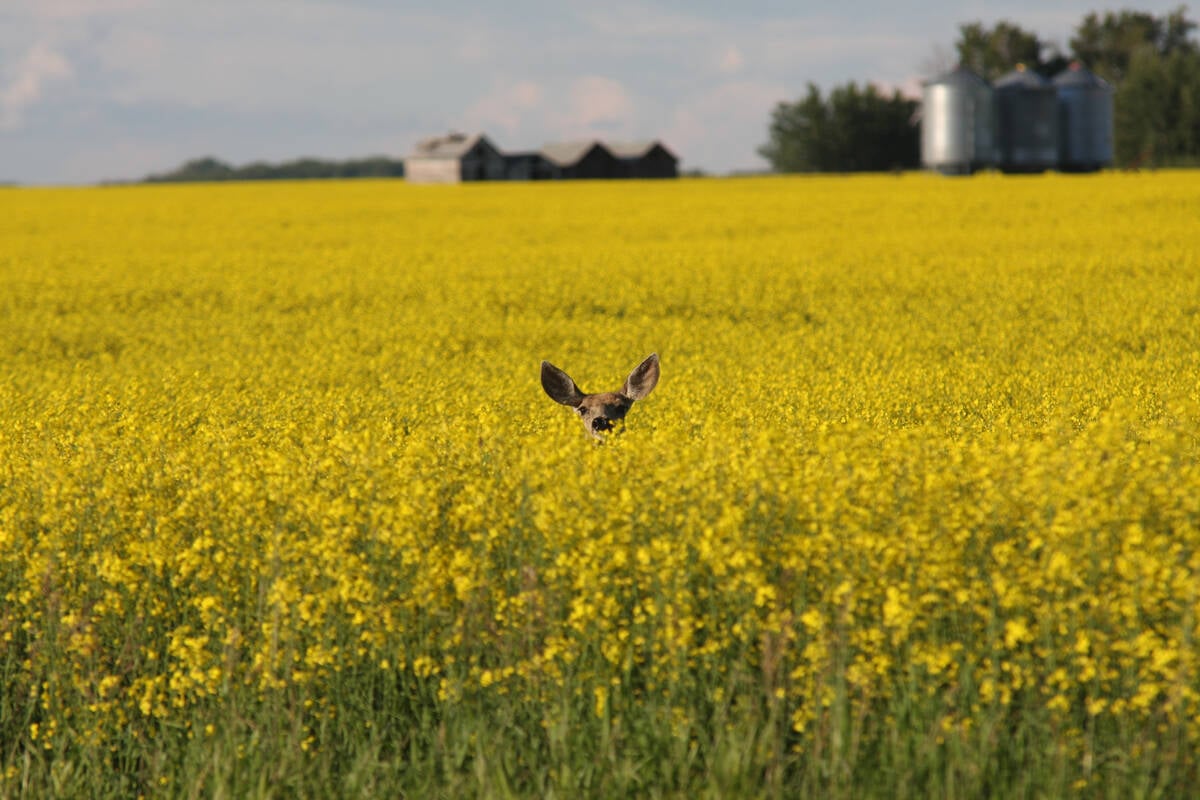Like survivors of a tornado, farmers and grain market players, stunned and battered by the impact of a huge U.S. corn crop, are looking skyward to see what the weather will bring.
The twister of corn hype ripped the market from its foundation March 30 when the United States Department of Agriculture reported American farmers intend to seed 90.5 million acres to the crop, millions more than most analysts expected.
It immediately caused Chicago corn prices to plunge the 20 cents per bushel trading limit, dragging down the price of other grain and oilseed crops including canola, wheat and barley.
Read Also

Drones now used to assess wildlife crop damage in Saskatchewan
Wildlife damage in Saskatchewan crops is now assessed by drones and artificial intelligence.
Corn dropped again on April 2, but other crops bounced back.
Fortunately for prairie grain farmers, many analysts agree on one thing: the dramatic response to this report is not the start of a bear market and does not represent a turning point.
“I don’t think it changes the (long-term) bullish outlook for corn,” said North Dakota analyst Mike Krueger of the Money Farm.
“Even if we planted all of those corn acres, we’d need near perfect summer weather to keep corn supplies from getting smaller.”
Most of the U.S. corn belt has excellent soil moisture heading into seeding, but more rain is forecast, leading to worries about seeding delays. Some forecasts expect a dry summer.
Market players eagerly anticipate the March USDA planting intentions report, regarded as the most accurate survey of farmers’ seeding plans.
Analysts expected farmers would plant more corn acres this year due to high prices, strong corn demand from ethanol producers and better returns compared to soybeans and wheat.
In the months leading to the report, corn had risen as the market tried to buy acres to ensure supply met demand. But the surprising numbers March 30 showed it succeeded beyond its expectation, and corn prices dropped.
“After corn went limit-down I think (traders) sold wheat and soybeans and anything else they could, to offset the big crash in corn. It caused a massive liquidation of long positions,” said Krueger.
The Chicago corn market plunged the limit again on the opening April 2 but later climbed back.
The story in other crops was different by midday April 2, with soybeans recovering 20 cents from the open, wheat plunging but then recovering back up to the session opening and oats initially falling but then recovering much lost ground and rising well above the opening.
Many were surprised that oilseed prices fell immediately following the report’s release, despite a big drop in intended U.S. soybean seeding.
“It should have been positive, but it went the other way,” said Newdale, Man., farmer Bruce Dalgarno, a market watcher and crop marketer.
“As a farmer sitting out here trying to decipher stuff, I don’t know what to make of this. I don’t think the experts have any clue what the heck they’re doing anyway.”
Dalgarno has been cautious with the 2007-08 market this winter, sensing dangers in the overwhelming bullishness of most traders and farmers.
He locked in some forward prices for his crops to make sure that he can sell some at a profitable price to pay for costly inputs.
After this week’s price plunge, he’s glad he didn’t leave his entire coming crop unpriced.
“To me, it just comes down to good marketing,” said Dalgarno.
Some analysts believe the price break will help support crop prices in the long run because the lower price will stimulate demand.
Livestock producers will like the price drop because it will lower their feed costs.
“I think the break was healthy. If anything, the break should trigger an increase in demand,” said James Barnett, analyst for Man Global Research, quoted by Reuters.
“In the big picture nothing has changed. If anything, it helps expand ethanol production and helps the livestock guys maintain,” Barnett said.















